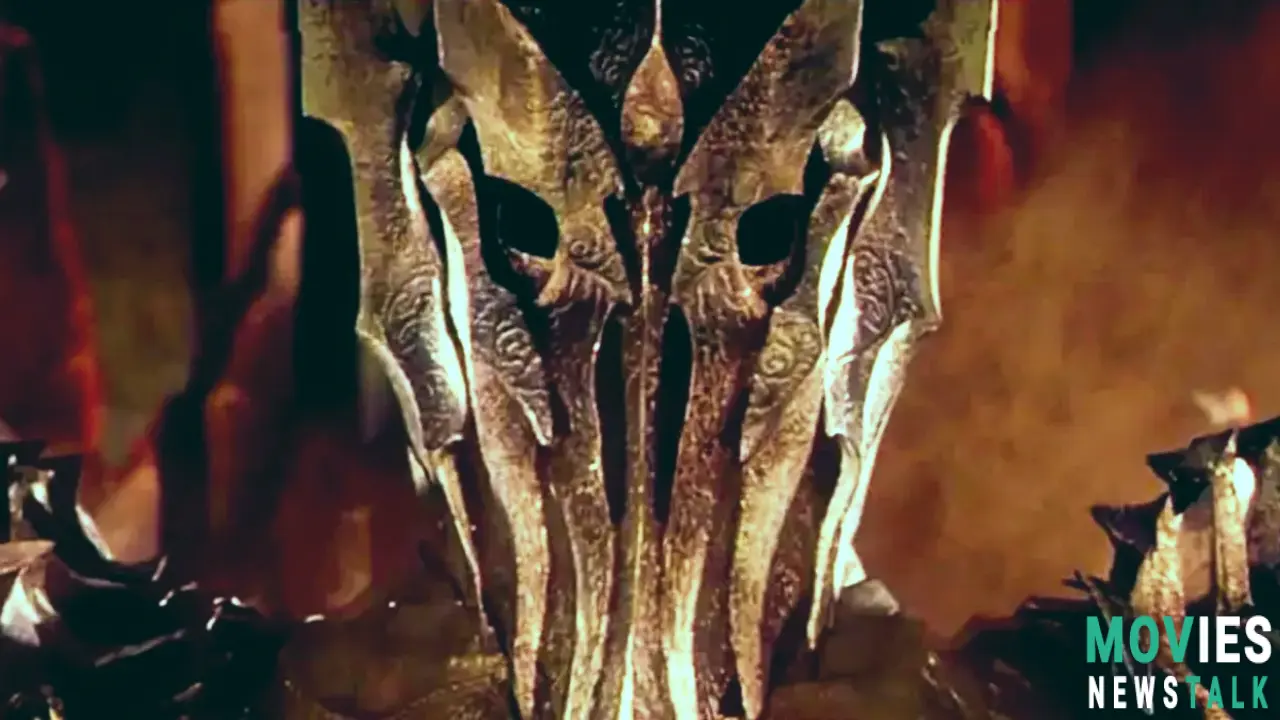The Lord of the Rings: How the Movies Totally Downplayed Sauron's Epic Power!
Sauron: From All-Seeing Eye to Hands-On Tyrant – Tolkien vs. Jackson!
The Lord of the Rings is all about Sauron—the ultimate big bad forging those legendary Rings of Power. J.R.R. Tolkien's novels went deep into his plans, detailing his every move. The movies however, those famousPeter Jackson adaptations—made some really, really big changes; impacting how that famous character appears to every individual. TheAmazon PrimeRings of Powerseries shows its own version, and although the plot follows that earlier Second Age storyline, it does add an interesting and even somewhat frightening twist to Sauron which only recently came into a broader public discussion.
Jackson'sLord of the Ringsmovies present Sauron primarily as a giant eye atop Barad-dûr;This iconic symbol, however was ultimately intended only as a metaphorical representation rather than his physical manifestation. Yet that creative choice ultimately made some key and unexpected changes on how every individual interprets that particular character’s roles and it made certain actions less apparent.
The All-Seeing Eye: A Misleading Portrayal of Sauron's Power
Jackson took creative liberties with Tolkien's original vision, impacting several viewers, those familiar with both texts, showing the enormous impact on public understanding of Tolkien’s masterpiece that such simple narrative choices could ultimately have.
InTolkien's Silmarillion, Sauron creating that "image of malice and hatred," (that"Eye of Sauron") was just that: a metaphor, showcasing his total omnipresence and power; Jackson takes that directly literally and as such made the resulting presentation become that singular symbol rather than portraying the immense capabilities portrayed originally, changing this crucial part for everyone familiar with both works. This simple visual metaphor impacted all audiences and the impact could have not been foreseen.
That madeSauronseem almost weak— a creepy floating eyeball, not capable of performing much besides sitting on a mountain observing! While scary; it doesn't reflect the immensely vast activities performed inTolkien’sbooks; a simplification which changes certain fundamental aspects involved and what some aspects actually implied for those unaware.
Sauron Unmasked: The Real Scope of His Actions in the Lord of the Rings
This simple oversight however hides the immense extent thatSauronwas performing numerous duties within his role throughoutThe Lord of the Rings.That character was involved in military leadership across entire armies; operating directly; demonstrating hands-on control throughoutMiddle-earth. He even torturedGollumpersonally (using hisninefingers–“He has only four on the Black Hand, but they are enough.”) to gain that crucial intelligence; this specific encounter fromGollumprovides a totally shocking encounter.
Yet it also showsSauron'sdiplomacy, and ability to perform intense magic spells – influencing events acrossMiddle-earth, through that ever-watchfulpalantír;it allows communication across locations using those unique magical objects that allowed the immense scale that made those plots successful for both the novels and film adaptation!
Sauronwasn’t some frail mage. He simultaneously performed as a military tactician, politician, and powerful sorcerer, manipulating the actions of leaders while managing events in remote locations. The extensive level of influence shown here makes many key aspects come together perfectly and demonstrates that Tolkien’s own mastery at world-building truly had no equal during his period! This level of intricacy might also provide certain inspiration to those other works and productions involving such similarly powerful character roles in similar fictional works!
The Power of Mystery: Why a Hidden Sauron Is Far More Terrifying
Sauron'soverwhelming power comes out equally powerfully inTolkien'snovels andJackson'smovies, creating this suspenseful air that works superbly through subtle narrative elements and suspense, yet those same plots deliver the most dramatic tension when performed to that most intense degree possible through those very same events presented with similar detail. In both cases that ever-present dread never fully leaves, yet its portrayal differs. TheRings of Poweroffers its own take and showsSauronphysically; yet these aspects, the portrayal methods never capture quite that same powerful feeling that was previously felt in the Warner Brosmovie trilogy.
Tolkienmostly only showsSauron'sactions indirectly; this kind of limited narrative perspective; those stories of intrigue recounted second-hand from multiple other parties perfectly builds suspense. Even the implied hints regarding that terrible power – bad weather across thePelennor Fields– showsSauron'sinfluence on everything thattranspires in those key moments. Jackson'sversion hada similar approach in delivering suspense yet through significantly different methods which produced some incredibly unexpected results. In essence this entire approach remains tremendously powerful; this approach becomes extremely potent across media— leavingviewersterrified but with the kind of intrigue necessary to bring forth more anticipation. It ultimately created the effect and those memorable and critically important insights for both media forms; delivering that lasting, immensely potent and chilling terror which made Sauron so extremely famous.
Conclusion: Sauron's Legacy – A Multifaceted Villain in Epic Proportions!
TheLord of the Ringswould never be quite the same without Sauron, demonstrating his profound and deep significance to the plotline! The enormous scale he operates at requires deep strategic planning. WhileJackson’smovie portrayal added cinematic value, his simplification downplayed that massively important role! His approach impacted some, yet not enough to overshadow that immense influence that Sauron originally exerted throughout the stories recounted byTolkien. This only shows how critical simple plot choices ultimately might impact every narrative element within any storytelling structure! That simplification however left certain key aspects far less apparent to others. Both media demonstrate a profoundly unique way to convey suspense and terror; yet the method differs across various formats which highlights an interesting but necessary distinction that ultimately demonstrates some key differences for fans.

